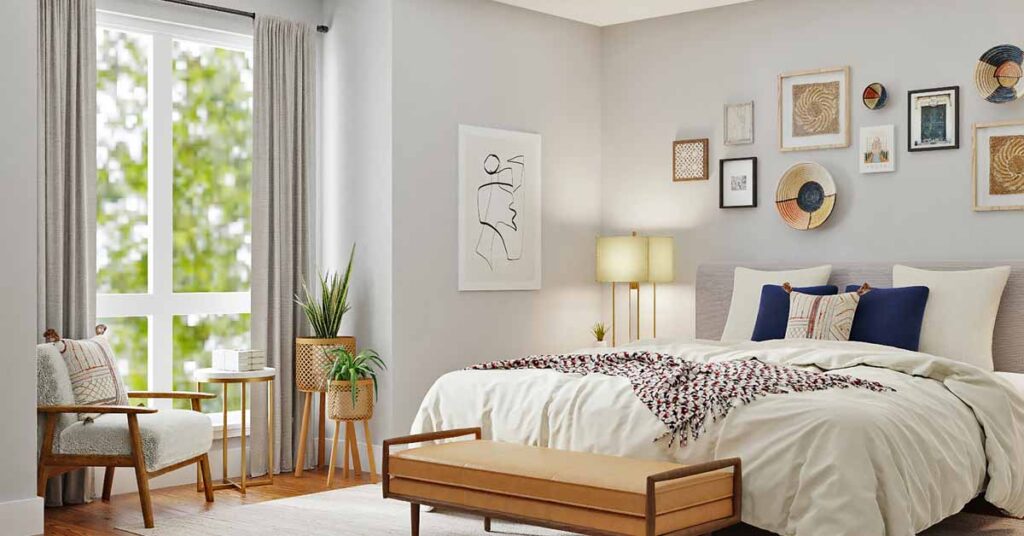Buying an investment property can be challenging, as there’s so much you have to consider.
One dilemma you might face is whether to invest your hard-earned cash buying a newly built property or an existing one. Both property types have their distinct advantages. However, there are also drawbacks you have to consider:
The pros of buying a new-build
- Depreciation benefits: Over time, your investment property will suffer general wear and tear. Depreciation is a tax benefit that lets you claim a deduction for this aging, by reducing your taxable income. In Australia, you can claim depreciation on an investment property for up to 40 years from the date of construction completion. As a result, a new property gives you greater depreciation benefits than an older one.
- More appealing to tenants: Typically tenants prefer new-builds, as they come with new kitchens, modern bathrooms and air-con. As such, it can be easier to attract quality tenants and charge higher rents.
- Lower maintenance costs: As everything is new, you usually don’t have to worry that something is going to break. On top of this, your ongoing maintenance costs should be lower than on an established property.
- Builder’s warranty insurance: For extra peace of mind, your new build should come with warranty insurance. This protects you for a limited time from cracks and any major structural defects to smaller issues like loose tiles in the bathroom.
The cons of buying a new-build
- Premium price: When you buy a new build, the developer wants to turn a profit. So your investment may come with a premium price tag so they can cover all their costs (such as construction and marketing) and still make a nice profit. The bills don’t stop when you’ve bought the property either. New builds may include hefty strata fees to maintain common areas such as swimming pools and gyms.
- Limited value-adding potential: While you might not have to deal with the shock of a surprise repair bill, there is often little opportunity to add any value when you buy a new-build.
- Risk of oversupply: Over the past two decades, developers have built many apartment blocks in Australia’s major capital cities. As a result, some suburbs have an oversupply of apartments – driving down rents and increasing vacancy rates.
- Can struggle to get finance: Some lenders are nervous to finance new builds because of the oversupply issues. So they may refuse your home loan application if it’s in a high-risk suburb or reduce the amount they are prepared to lend.
- Quality may be sub-par: While your new-build is covered by warranty insurance, some quality issues only come to light a few years down the line. These can include inadequate waterproofing or cladding problems – both of which are expensive to repair and require major building work.
The pros of buying an old property
- Generally more affordable than new: Established properties typically carry less of a premium than newer ones. As such, buying an older property could get you started on your investment journey faster.
- Capital growth potential: If you buy the right property for the right price, you could reap the benefits of capital growth. Older properties generally don’t command the same premium as new homes, which means they can have better growth potential, particularly in the short-term. You can also research historical data about the property to see how its value has changed over time.
- Renovation or subdivision potential: The more value you add to a property, the more you can boost your equity. Depending on the property and the local zoning, you could also subdivide to maximise your return.
- No limit to location: Old properties can be found in neighbourhoods all over Australia – so there’s no geographical limit to where you can buy one.
The cons of buying an old property
- Spending more on maintenance and repairs: As a general rule, the older the property, the more you’ll have to spend on maintenance and repair. Depending on how big the repair job is, your tenants might have to vacate – costing you lost rental income.
- Hidden problems: Older properties can come with nasty surprises such as plumbing and wiring issues, pests and structural defects. This can be expensive to fix – though a professional property inspection should identify any major problems before you buy.
- Less appealing to tenants: Old properties can have more character than new-builds. But dated fixtures and fittings might not appeal to tenants who prefer a more modern design.







